Jamyang Khyentse Wangpo and the Lamdre tradition
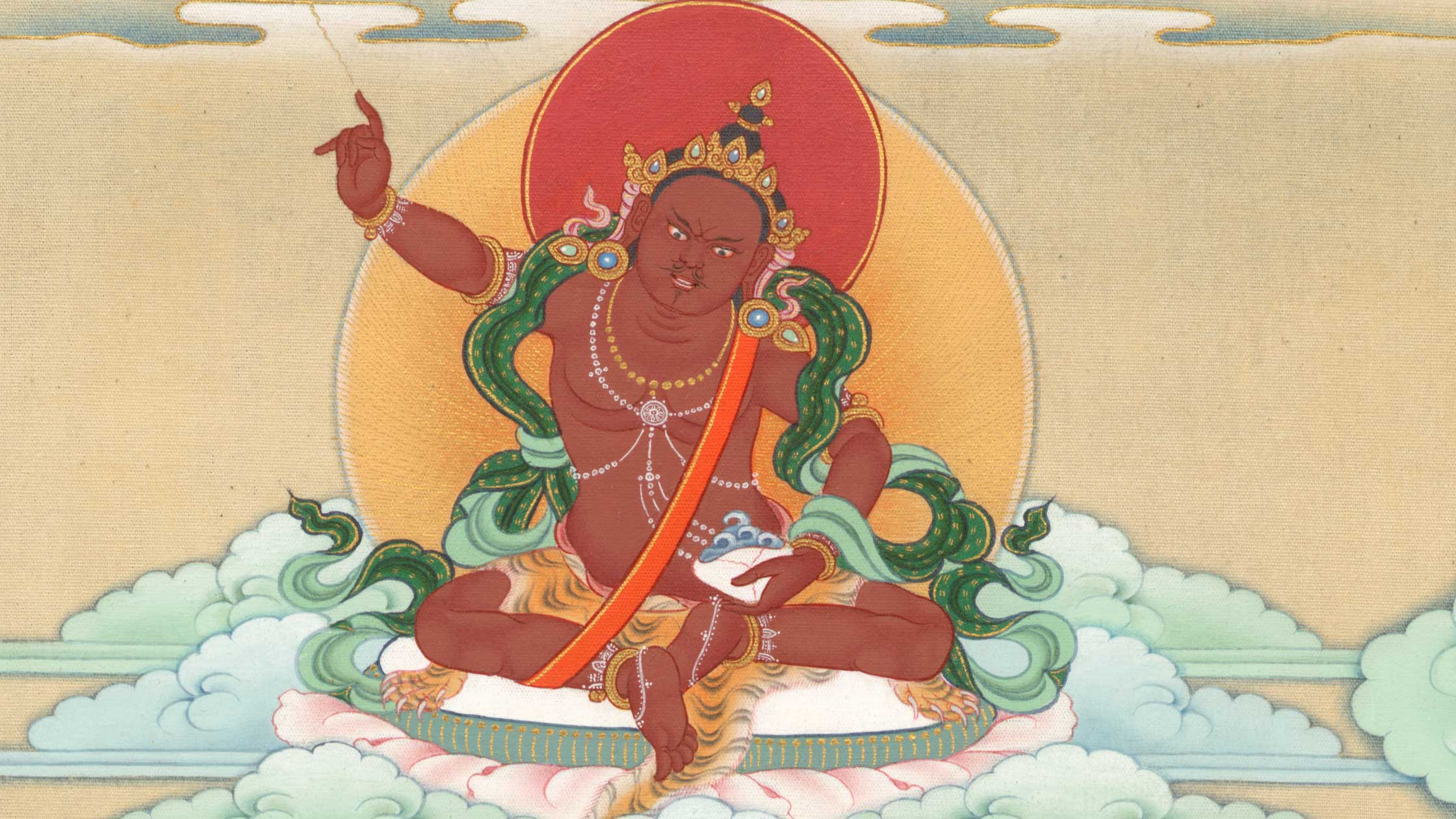
While Jamyang Khyentse Wangpo is widely celebrated as a founder of the Rimé (non-sectarian) movement, his extensive training in the Sakya tradition and his role as a holder of the Lamdre teachings are less well known. This lineage was central to his path and is reflected in his composition Swift Bestowal of Blessings: A Supplication Calling the Sources of Refuge from Afar. In this prayer, Khyentse Wangpo invokes the holders of the Sakya tradition and presents the progressive stages of the Lamdre path.
Based on the teaching by Do Tulku Rinpoche, which was given as a part of KVP’s Text of the Month initiative, this article traces Khyentse Wangpo’s life as a holder of Lamdre, his teachers and transmissions, and the central role of devotion in his practice.
Lamdre Transmission in the Sakya lineage
The Lamdre lineage begins in India with the great Mahāsiddha Virūpa, whose realization was transmitted to disciples such as Ḍombi Heruka and Kāṇhapa. For centuries it remained a “whispered lineage” (nyengyu), passed from master to only one disciple at a time. When it reached Tibet, it came to Sachen Kunga Nyingpo. His teacher Zhangtön Chöbar instructed him, “For eighteen years, tell no one. Keep it secret. After eighteen years, you may do as you wish.” Sachen followed this, and after that period he composed eleven commentaries that gave Lamdre its written form and established it as the heart teachings of the Sakya school.
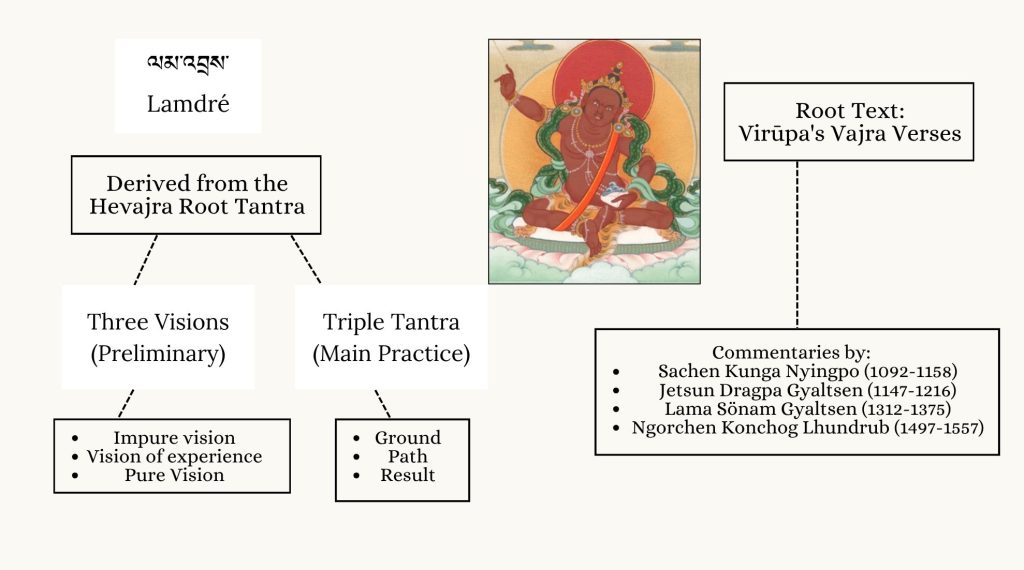
Khyentse Wangpo received the Lamdre—the system of teachings that encapsulates the core Sakya philosophy and practices—in its entirety from his teachers and transmitted it to his disciples. The supplication Swift Bestowal of Blessings honors three foundational Sakya lineage masters. Through this prayer, Khyentse Wangpo expressed his devotion to this lineage by invoking the blessings of three main Sakya sub-lineage founders—Sachen Kunga Nyingpo (“The emanation of Mañjughoṣa, the Sakyapa”), Ngorchen Kunga Zangpo (“Ngorchen Vajradhara, protector of the world”), and Tsarchen Losal Gyatso (“Lord of the Dharma, Tsarchen, sovereign holder of secrets”). The supplication then moves through the entire path of Lamdre from foundation to fruition. To fully understand the context of Khyentse Wangpo’s connection to Lamdre, we must look at his own training in this lineage, beginning with his recognition and early training under the Tartse masters.
Khöndung Ratna Vajra Sakya Rinpoche reflects on Jamyang Khyentse Wangpo’s
deep connection with the Sakya lineage.
Training Under the Tartse Masters
At the age of three, Khyentse Wangpo met Tartse Khenchen Jampa Kunga Tenzin, a great Ngor throne-holder and later one of his teachers, and while sitting on his mother’s lap received an initiation from him. When he was twelve, Jampa Kunga Tenzin told his parents that their son was the rebirth of his own teacher, Tartse Khenchen Jampa Namkha Chimé. Before his passing, Jampa Namkha Chimé had told his close disciples that the king of Derge was urging him to take rebirth. “Someone like me has no control over that,” he said, “but if I do return, it will be as his son,” pointing to the man who would later become Khyentse Wangpo’s father. When the child was born the following year, recognition of the tulku seemed beyond doubt. From then on he was known as Tartse Tulku, or Tartse Zhabdrung, and when he took monastic ordination he received the name Jamyang Khyentse Wangpo Kunga Tenpe Gyaltsen Palzangpo.
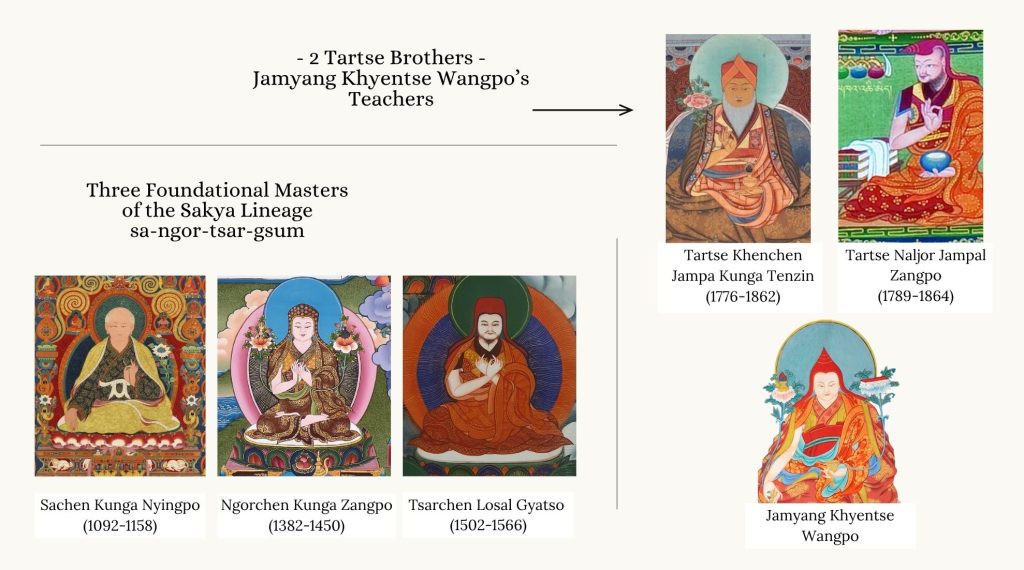
Among the many teachers who shaped Khyentse Wangpo’s life—later in life he counted having 152 gurus—four were especially central: the Tartse brothers Jampa Kunga Tenzin and Naljor Jampal Zangpo, Shalu Losal Tenkyong, and Jamgön Kongtrul. Their guidance was decisive, not only in his education but also in his orientation as a practitioner and master. With the younger of the Tartse brothers, Naljor Jampal Zangpo, he later spent four years in retreat at Dzongsar. Together, teacher and student completed the cycle of Hevajra practice over eight months, the cycle of Vairocana over six, and continued through the other core practices of the Sakya Lamdre system in sequence.
Breaking the Mold
When he was young, Khyentse Wangpo was groomed as a possible future throne-holder of Ngor and expected to follow the path of a monastic leader. The Ngor sub-lineage was particularly known for its strict commitment to the vinaya (monastic discipline) within the Sakya school, and the throne-holder’s role included responsibility for preserving both discipline and the Lamdre transmission.
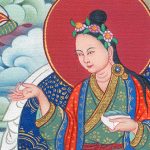
At seventeen, however, events began to turn. Khyentse Wangpo experienced repeated prophecies and dreams in which he encountered a young woman who appeared as an emanation of Yeshe Tsogyal. The prophecy was that if they met, he would receive all kinds of Tibetan treasure teachings. For him these encounters carried immense significance, but to those around him they seemed strange, even troubling. His fellow monks mocked him, suggesting he simply wanted to leave monastic life, and even his mother scolded him when he confided in her. With no one to affirm the legitimacy of what he was seeing, the moment passed. The young woman died, the prophecy was dismissed, and soon afterward Khyentse Wangpo fell gravely ill.
For nearly seven days he lay almost without breath. His mother placed a strand of hair across his lips, waiting for the faintest movement that would signal life. At the same time, his teacher Tartse Khenchen Jampa Kunga Tenzin was performing a jinsek (fire pūjā), and when the fire’s light struck Khyentse Wangpo’s eyes, he suddenly revived. Later he recalled that during that time when he appeared to be unconscious, he traveled through the six realms. Yet, on waking he had forgotten everything he had studied and had to be reintroduced to the most basic things—“this is a mālā, that is a book”—as if he were a child again. He himself admitted that it felt like only a quarter of his former intelligence remained. What he did remember clearly was his mother, and the visions he had seen.
This crisis, though devastating in one sense, marked a decisive turning point: it was after this that he realized that “he needed to get out, to break this mold of a Sakya tulku type,” and his path began to change. Until then, he had been expected to become a head of the Ngor lineage, surrounded by a firmly monastic and sectarian environment. But after his recovery he began to see that this trajectory was no longer his. Accounts say that during a monastic picnic he quietly left with only one attendant. From that moment he lived as a chadralpa, one who has “cut all ties,” wandering across Tibet, sometimes even barefoot.
Wandering Years and Transmissions
In this period he visited many teachers, one after another, receiving transmissions wherever they were to be found. Many of the transmissions he sought came not only from living masters but also from those who had long since passed. As Do Tulku Rinpoche explained, “Khyentse Wangpo would get a text and think, ‘Oh, where do I ask for oral transmission, where do I ask for instructions? There’s no lineage holder alive.’ So then he would just read the text and pray to the author, the great master who lived 800–900 years ago, and then the teacher would appear and give him the entire transmission.” Similarly, Khyentse Wangpo would look at the moon, remember past lives as Sakya Paṇḍita, pray to him and see his face emerging from the moonlight. He had the same visionary experience with Guru Rinpoche and many other masters. At that time, it was not regarded as miraculous but as the natural expression of devotion and pure vision.
After his years of wandering, he returned to Dzongsar. This period was also marked by his collaboration with other great masters of the time, especially Jamgön Kongtrul and Chokgyur Lingpa. Together they collected, exchanged, and preserved a vast range of teachings from among all the major schools and lineages of Tibet, including Sakya. In this way, what later came to be called the Rimé movement took form: a spirit of openness and preservation, rooted not in opposition to institutions but in devotion to the Dharma wherever it could be found.
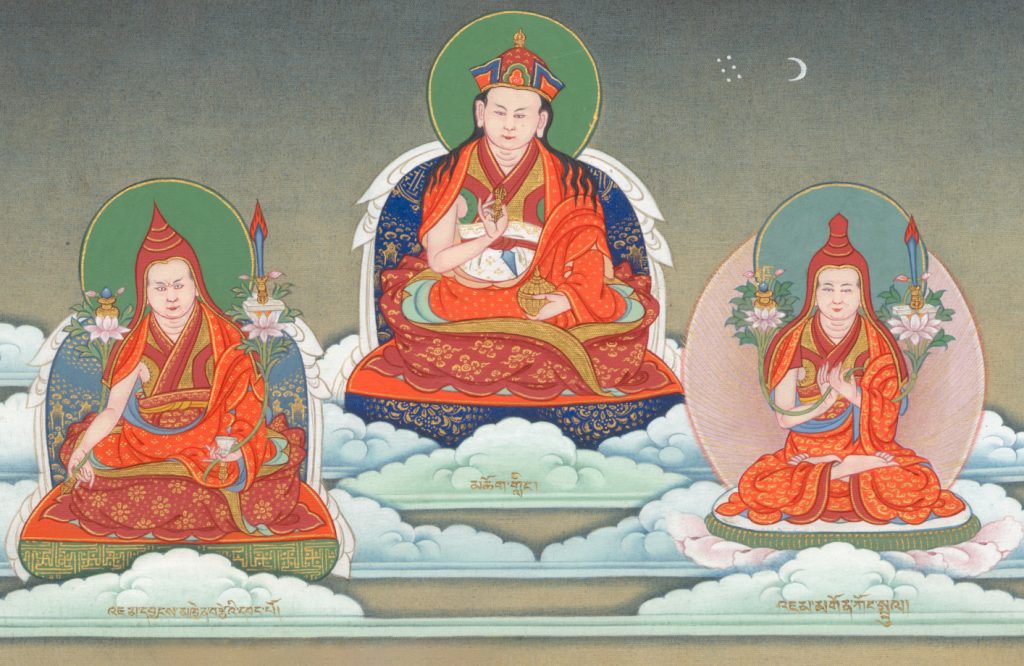
The Lamdre View and Devotion
These events of Khyentse Wangpo’s life—whether receiving visions, facing near-death illness, or leaving institutional life—are not mere biographical details, they provide the context to understand how pivotal Sakya training was in his life and how devotion remained the force that sustained his connection to the teachings. Do Tulku Rinpoche emphasized that devotion is not merely an emotion but a way of seeing—a recognition of the guru’s qualities and the blessings of the lineage. Without this recognition, even many years of study and practice remain dry and fruitless. And when such devotion is present, there is an immediate result: “If you pray with devotion, the first thing is this immediate sense of protection that spreads through your being—that you are not alone, that you belong somewhere, to somebody.” He also reminded us that if devotion or samaya (the sacred bond between teacher and student) weaken or break, Vajrayāna provides ways to restore them through confession, purification practices, and renewal of vows.
Rinpoche also addressed the practical question of how to restore devotion when it wavers. “The best way is to pray,” he said, continuing the Khyentse lineage approach of turning to devotion itself as the remedy. “Pray to have devotion. And then another: to contemplate upon the qualities of the gurus. Remember their voice, every good thing they have done that you know, you should think about that.” This approach recognizes that devotion, like other aspects of the path, can be cultivated and renewed through practice. This possibility to repair is itself part of devotion, since it keeps the connection alive and allows the path to continue.
This also aligns with Rinpoche’s explanation that the Lamdre view shows the path and the result as inseparable. This indivisibility is the very essence of the view, which Khyentse Wangpo distills into just a few lines of the prayer:
འཁོར་འདས་དབྱེར་མེད་འཆར་བར་བྱིན་གྱིས་རློབས།།
khor dé yermé charwar jin gyi lob
Grant your blessings so that the indivisibility
of saṃsāra and nirvāṇa becomes apparent.
བསྐྱེད་རིམ་གསལ་སྣང་འགྲུབ་པར་བྱིན་གྱིས་རློབས།།
kyerim sal nang drubpar jin gyi lob
Grant your blessings so that we attain
the vivid presence of the generation stage.
རྫོགས་རིམ་ཡེ་ཤེས་སྐྱེ་བར་བྱིན་གྱིས་རློབས།།
dzogrim yeshé kyewar jin gyi lob
Grant your blessings so that the primordial wisdom
of the completion stage arises.
མྱུར་དུ་རྣམ་མཁྱེན་ཐོབ་པར་བྱིན་གྱིས་རློབས།།
nyur du namkhyen tobpar jin gyi lob
Grant your blessings so that we quickly
attain omniscience.
Rinpoche noted that the first line expresses the view as khor dé yermé—the indivisibility of saṃsāra and nirvāṇa, while the subsequent lines describe the specific practices—kyerim (generation stage) and dzogrim (completion stage)—that lead to the realization of that view. In this way, the prayer moves from the philosophical principle to the practical steps of the path. Within this, devotion becomes the very means by which the path and result unite.
Learn more about this prayer, watch the recording of this teaching and follow-up tutorial on our September Text of the Month page.
 Do Tulku Rinpoche was recognized by His Holiness Kyabgon Gongma Trichen Rinpoche as the reincarnation of the Sixth Raktrul Rinpoche. He is the resident lama and spiritual guide of Arya Tara’s Net, an online community and center for Buddhist studies and practice in Germany. Rinpoche is also one of KVP’s in-house reviewers and expert traditional scholars, providing guidance on difficult translation points to both our translation team and trainees.
Do Tulku Rinpoche was recognized by His Holiness Kyabgon Gongma Trichen Rinpoche as the reincarnation of the Sixth Raktrul Rinpoche. He is the resident lama and spiritual guide of Arya Tara’s Net, an online community and center for Buddhist studies and practice in Germany. Rinpoche is also one of KVP’s in-house reviewers and expert traditional scholars, providing guidance on difficult translation points to both our translation team and trainees.
Compiled and written by Inna German.
